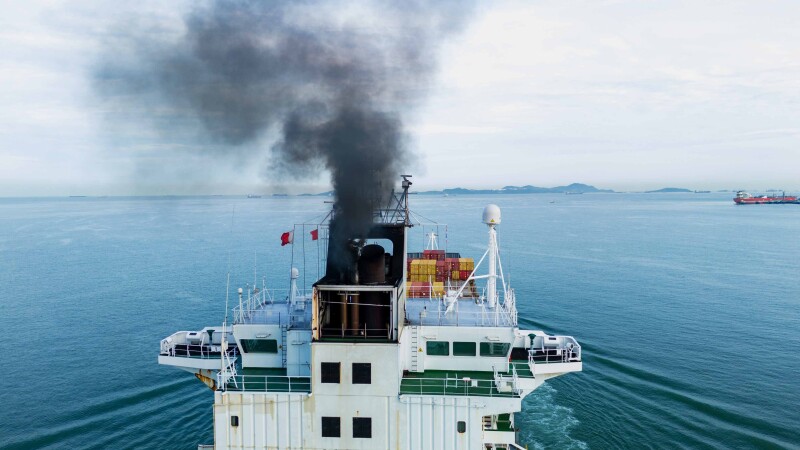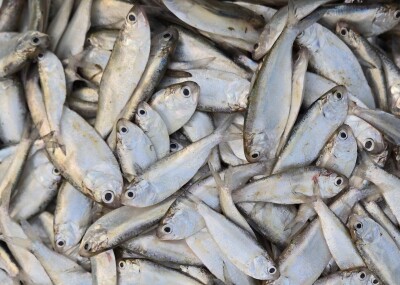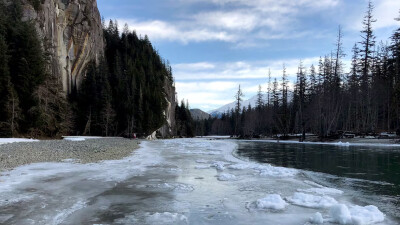Marine carbon dioxide removal (mCDR) is a set of experimental techniques that aim to accelerate the ocean’s uptake and storage of heat-trapping carbon dioxide pollution from the atmosphere. Someday, these techniques could play a major role in combating climate change. mCDR is not yet a major subject of fishermen’s daily dock talk, fishing association newsletters, or industry trade shows, but it’s time we make it one.
This article is the first in a series about mCDR for commercial fishermen. In this piece, we provide an overview of mCDR methods and share insights into the rise of mCDR as a research and policy priority in the U.S.
Readers can continue their learning and engagement on these topics by attending a May 28 webinar on “Marine Carbon Dioxide Removal: What Fishermen Need to Know”, hosted by the Fishery Friendly Climate Action Campaign, the Responsible Offshore Development Alliance, and other partners.
What is mCDR?
mCDR is garnering interest because many of the world’s scientists have concluded it is no longer possible to avoid major climate disruption by limiting future greenhouse gas emissions alone. Addressing the remaining “emissions gap” will require efforts to remove and safely store carbon dioxide that has already been emitted by human activities. Given the oceans’ vastness and their already vital role in the carbon cycle (oceans have sequestered 30% of excess anthropogenic carbon dioxide emissions to date), some climate problem-solvers believe that mCDR could be a big part of the solution to climate change.
Proposed mCDR techniques are diverse. Some methods work by accelerating photosynthetic activity. For instance, kelp could be farmed in large quantities to absorb carbon dioxide within its leafy fronds. Kelp biomass could then be deliberately sunk to the ocean floor as a form of long-term carbon storage. Alternatively, iron or nitrogen could be added to parts of the ocean where these nutrients are scarce, triggering phytoplankton blooms that suck up carbon dioxide. A third possibility involves installing long vertical pipes that pump nutrient-rich bottom water to the surface to support plankton growth, or that pump plankton-rich surface water to the ocean depths where this biomass can be locked away from the atmosphere for centuries.
Other mCDR techniques work by boosting the ocean’s capacity for abiotic uptake of carbon dioxide. In a method called ocean alkalinity enhancement, alkaline molecules could be added to seawater to react with carbon dioxide molecules already in the water to create stable forms of carbon, making it possible for the ocean to absorb additional carbon dioxide from the atmosphere. This alkalinity could be derived from minerals such as lime or olivine, or it could be created from seawater itself using electrochemical methods. In another method, called direct ocean capture, carbon dioxide can be “stripped” from ocean water using electrochemical methods and the addition of an acidic solution. Carbon-depleted water can then be added back into the ocean, while the extracted carbon dioxide can be stored underground or used in industrial processes.
All proposed mCDR techniques have the potential to affect ocean ecosystems, fishery resources, and the fishing communities who depend on them, but little is known about these impacts, which could be positive, negative, or a mix of both. For instance, ocean alkalinity enhancement may ameliorate ocean acidification at local scales (a positive impact), but if alkalinity is derived from minerals, this method could potentially release toxic impurities found mixed in those minerals into seawater. Kelp farming could create valuable habitats for commercially important fish species, but it could also displace fishing activities if sown on fishing grounds. Ocean fertilization could generate surplus plankton growth to supercharge fish yields, or it could produce harmful algal blooms that harm commercial species or make them unmarketable.
Scientists do not yet have a clear understanding of the carbon removal efficacy of mCDR techniques. Precise quantification of the amount of carbon removed by each method is important, since sales of carbon offset credits are likely to be a major source of financing for mCDR activities. Without clear standards for assessing the carbon removed and durably stored by an mCDR project, mCDR credits could become meaningless from a climate change mitigation perspective, resulting in delayed progress towards meeting global climate goals.
To resolve these unknowns, scientists are undertaking laboratory studies, modeling analyses, and small-scale field trials. But it’s just as important to invest in the engagement and informed leadership of communities who may ultimately be affected by or have a stake in mCDR. Fishing communities, in particular, should be at the center of this work.
The rise of mCDR in the U.S.
mCDR is a new field that became a focus for research and public policy in just the last few years. A crucial catalyst was the Sixth Assessment Report of the Intergovernmental Panel on Climate Change, published in 2023, which concluded that limiting warming to the internationally agreed goal of 1.5 degrees C above pre-industrial levels cannot be done without deploying a significant amount of carbon removal.
Other key enablers have included biennial summits hosted by Ocean Visions, a nonprofit founded in 2019 to “support the implementation of bold, ocean-based solutions,” and the publication in 2022 of the report “A Research Strategy for Ocean-Based Carbon Dioxide Removal and Sequestration” by the National Academies of Sciences, Engineering, and Medicine.
The Biden administration embraced mCDR as a potentially valuable component of the U.S. climate toolkit, while emphasizing the need for preliminary research and development of governance principles. For instance, the 2023 Ocean Climate Action Plan recommended that federal agencies “build sufficient knowledge about the efficacy and tradeoffs of marine carbon dioxide removal (CDR) and use it to guide deployment decisions” by 2030. Soon thereafter, the National Science and Technology Council established an interagency Fast-Track Action Committee on Marine Carbon Dioxide Removal, which published a National Marine Carbon Dioxide Removal Research Strategy in November 2024.
A September 2024 Congressional hearing revealed bipartisan support for a federal role in mCDR research. Republican legislators at the hearing raved about mCDR through the lens of economic opportunity and competitiveness, with Representative Brandon Williams (R-NY) praising the “extraordinary amount of innovation and research happening” and stating, “I’m very happy that [the Department of Energy] is de-risking some of these solutions so that we can move on.”
In contrast, Democratic legislators zeroed in on the potential climate benefits of mCDR, while also emphasizing the need for precaution to “ensure proper guardrails and decide whether any of these methods should be deployed at all,” according to Representative Jamaal Bowman (D-NY).
Although the Trump White House disbanded the Fast-Track Action Committee and removed both the Ocean Climate Action Plan and the National Marine Carbon Dioxide Removal Research Strategy from government websites, this administration’s stance towards mCDR in general is not clear. Several Biden-era federal funding commitments to mCDR research remain in place, and President Trump’s statements have signaled support for the related fields of carbon capture and storage (CCS) and direct air capture (DAC), which enjoy broad support from oil and gas companies. Meanwhile, an XPRIZE competition backed by White House advisor Elon Musk awarded $100 million to six leaders in carbon removal innovation, including a startup that is developing techniques for ocean alkalinity enhancement, a form of mCDR.
In sum, while the approach to mCDR may be different now than it was under the previous administration, there is no reason yet to assume that interest in this field will subside. Fishermen should continue to learn everything they can about mCDR and prepare to engage in shaping its future.
In the next article in this series, we take a scan of current collaborative efforts to chart a course for mCDR science and governance, and point to specific ways that fishermen can get involved. In the meantime, please consider registering for a May 28 webinar on “Marine Carbon Dioxide Removal: What Fishermen Need to Know,”




.png.author-image.300x300.png)


